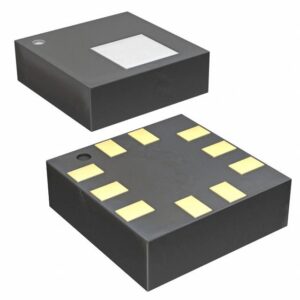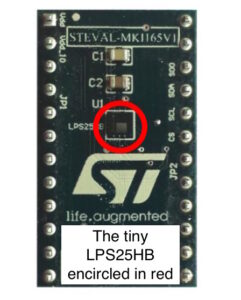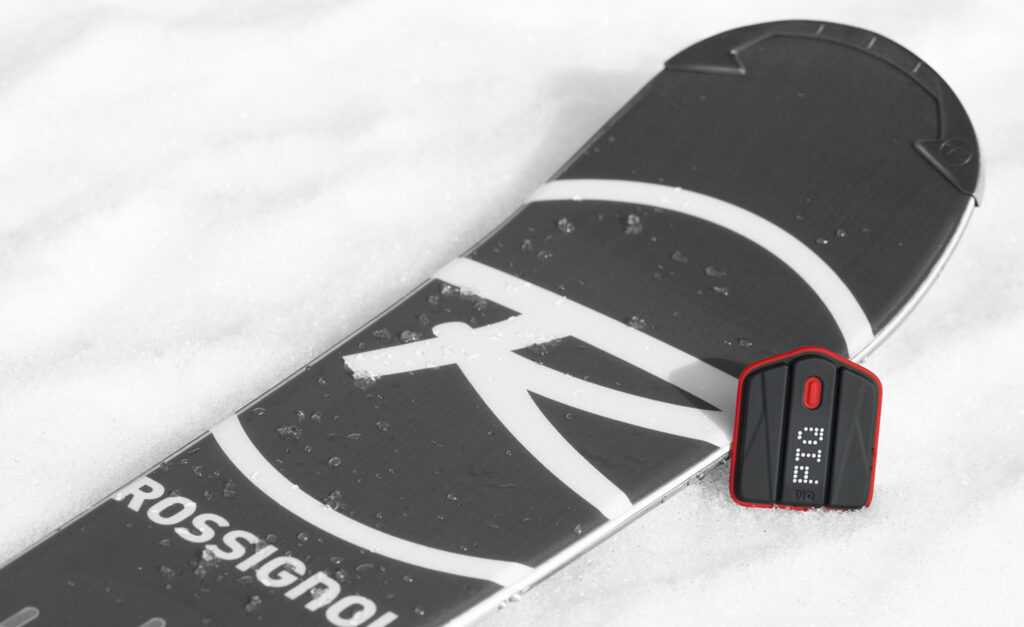The arrival of wearable technologies has changed the world of sports, and PIQ is one of the founding players of this revolution. The company designed the 13-axis multi-sport PIQ sensor that tracks the movements of players on many sports such as golf, tennis, kiteboarding, or skiing to offer an unprecedented level of data that will enable them to enhance their game. The device is small (44 mm x 39 mm x 5 mm), and lightweight (10 grams or 0.35 oz) Hence, players can easily insert the sensor into a dedicated accessory, for example into to a wristband, on a board, or a golf glove. The multi-sport sensor collects 195 000 data points per minute that players will use to improve form, and technique, to achieve new levels of performance. Besides, PIQ has an LED display allowing all users to see their performance in real time.
LPS25HB : Using Piezoresistors for Great Accuracy

The PIQ is possible in part because of the LPS25HB Micro Electro-Mechanical System (MEMS), a pressure sensor measuring just 2.5 mm x 2.5 mm x 0.76 mm, and featuring an exceptional shock survivability of 10 000 G. Aside from wearables, the LPS25HB has found a home in portable altimeters and barometers, high-end GPSes, and weather stations. Its popularity is due to its wide absolute pressure range of 260 hectopascals (hPa) to 1260 hPa, its amazing operational temperature range of -30ºC to +105 ºC, and its great precision thanks to the addition of a temperature sensor that compensate certain measurements.
These impressive specifications are possible because of the MEMS’ piezoresistive Wheatstone bridge, one of the most sensitive and precise ways of measuring resistance variations. Piezoresistance is manifested when the electrical resistance of a solid changes as it bends. In a pressure sensor MEMS, piezoresistors are often made of silicon or germanium and placed on a silicon membrane. A change of atmospheric pressure will apply a positive or negative pressure on the membrane, resulting in the modification of the stress applied to the piezoresistors, which will be measured as a change in electrical resistance. The Wheatstone bridge outputs this resistance as a voltage that the system can process to offer measurements.
To insure great accuracy, ST calibrates the sensor at three temperatures and two pressures. The values are stored in memory and used during operations to derive the results. Thus, the LPS25HB can be used without ever worrying about calibration.
LPS25HB : 32 Slots FIFO and a Power Consumption of 4µA

The LPS25HB is not only precise but flexible. The MEMS embeds 32 slots data FIFO (First In First Out). This means the system can store 32 measurements without having to disturb the host micro controller (MCU) and waste energy. When the system wakes up, it can pull the stored data and process it.
This feature opens the door to a wide range of applications. For instance, it is possible to place values in the FIFO and compute the mean of some or all the measurements stored to implement a moving average, hence saving computational resources. Trigger events can also force data in the FIFO slots. It gives engineers the ability to still gather data in case of some system failures, for instance.
Finally, with a low-resolution mode of only 4 µA or 4.5 µA with FIFO, the LPS25HB reduces the strain on batteries. As wearables must remain small and lightweight to be useful, and thus cannot use large batteries, these energy-saving features make the device a lot more practical.
“ST as 1-stop supplier” for the PIQ
The PIQ sensor also relies on many more ST components. The STM32F4 MCU, like the one found in the SPEEDY Board, serves as the main processor. The BlueNRG Bluetooth Low-Energy chip offers fast connection to smartphones while keeping the power consumption to a minimum. Finally, the STBCFG01 governs the battery-charging process to ensure efficiency and reliability. Hence, ST can offer comprehensive solutions that facilitate the collaboration with designers and reduce the time to market. As Cédric Mangaud, PIQ’s CEO, explains,
“ST simply had the best control, sense, communication, and power-management solutions to help achieve [the PIQ sensor]. This allowed us to have ST as 1-stop supplier”

To know more about this multi-sport sensor, please visit PIQ. Information on the LPS25HB pressure sensor is available on ST’s website.